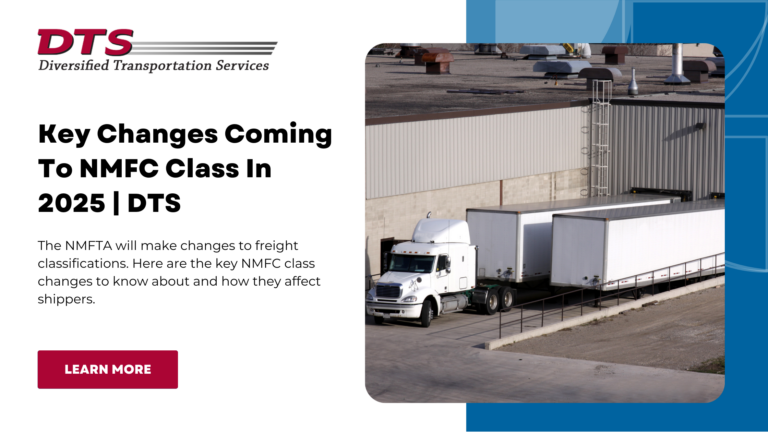
The National Motor Freight Traffic Association (NMFTA) is making changes to freight classification for less-than-truckload (LTL) freight in 2025. What will those changes involve? And how will they affect shippers?
Let’s look at the NMFTA’s upcoming changes and the expected impact they’ll have on shippers.
The National Motor Freight Traffic Association is a nonprofit organization formed in 1956. It represents the interests of LTL carriers and helps standardize and classify freight goods. One of the many activities it’s involved in is maintaining the National Motor Freight Classification (NMFC).
The NMFC is a standardized system that assigns classifications to various commodities. These classifications are based on the commodities’ key characteristics, such as:
NMFC classifications determine shipping rates and ensure consistency in the shipping industry. Using the right freight class is important for avoiding mistakes when loading and shipping goods. Assigning the wrong class to your freight, particularly by labeling items as being in a lower class than they should be, may lead to unexpected charges.
Shippers and carriers who are used to the current NMFC system should be aware of the NMFTA’s upcoming changes to reduce the risk of costly mistakes in the future.
In 2024, the NMFTA announced its plans to make comprehensive changes to the NMFC. These adjustments are part of the organization’s “Classification Reimagined” initiative, which aims to modernize the system and simplify freight classification.
According to the NMFTA’s website, the organization considers the current NMFC system “complex and outdated.” This initiative will improve transparency between shippers, carriers, and third-party logistics providers. The NMFTA’s changes are expected to take effect on 19 July 2025 and will be implemented in phases.
The first phase will be Docket 2025-1.
Expected changes include:
The NMFTA is introducing the new NMFC changes to make shipping easier for everyone involved. This may empower organizations to achieve more in less time. However, it’s natural for shippers to feel a little concerned about how these adjustments will affect them — especially financially.
Shippers may see adjustments in their shipping rates once the changes take effect, depending on how the system reclassifies their freight under the new density-focused model. To prepare for the changes, shippers should:
Preparing carefully should make it easier for shippers to adapt and benefit from these changes. The improved classification consistency is expected to create more accurate pricing predictions and reduce errors. That can help shippers avoid unnecessary charges and disruptions.
Teams that have used the current system for years may find it takes some time to acclimate to the new way of working. For shippers, who want help navigating the new NMFC classification system, a simple solution is to work with a third-party logistics provider with the expertise to offer insightful advice and guidance.
The NMFTA’s new NMFC changes will modernize the current system and simplify freight classification. Shippers, carriers, and third-party logistics providers all have the potential to benefit from clearer communication, easier freight classes, and smoother shipping processes.
Preparing for these changes before July 2025 will help shippers avoid delays, errors, and unexpected charges. By taking action ahead of time, shippers can prevent disruptions and additional costs.
DTS is the ideal partner for shippers who need assistance navigating the new NMFC class changes. We are a shipping logistics company helping businesses move their freight across the country and beyond. To learn more about how we can help you reach out to our professionals
Whether you're a company looking to improve one facet of your supply chain, your entire supply chain, or simply looking for a transportation and logistics consultation, we can help.